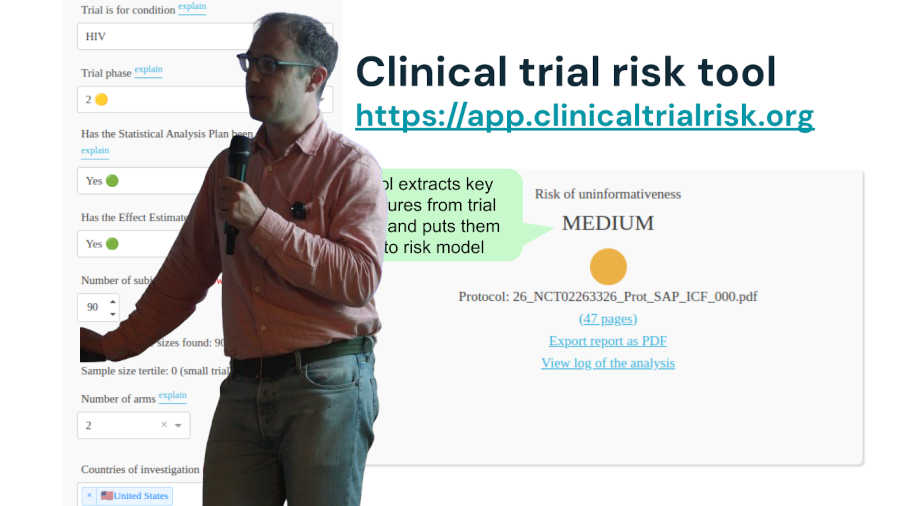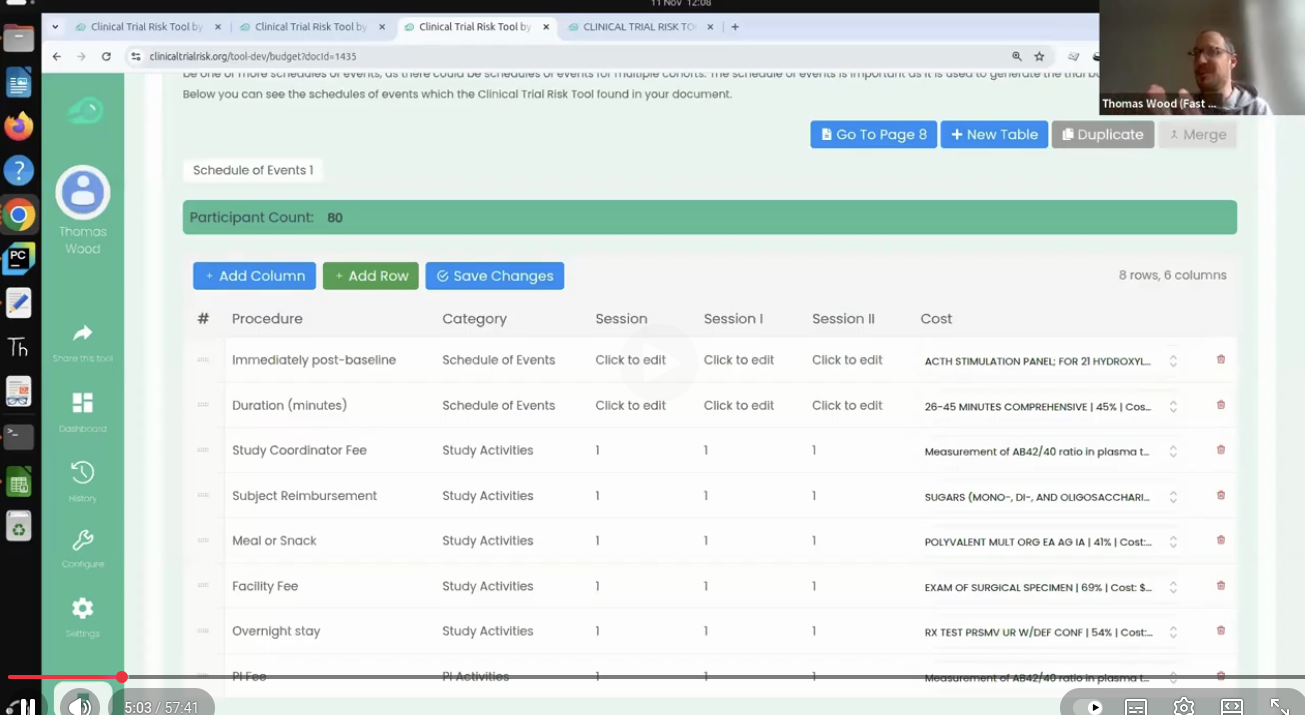
On 8 October, Thomas Wood of Fast Data Science presented the Clinical Trial Risk Tool, along with the Harmony project, at the AI and Deep Learning for Enterprise (AI|DL) meetup sponsored by Daemon. You can now watch the recording of the live stream on AI|DL’s YouTube channel below:
The Clinical Trial Risk Tool leverages natural language processing to identify risk factors in clinical trial protocols. The Clinical Trial Risk Tool is online at https://clinicaltrialrisk.org/tool.
Artificial Intelligence and Deep Learning for Enterprise is a meetup group in London dedicated to talks from people in the industry using developments in AI for exciting real world applications.
We initially developed the Clinical Trial Risk Tool to identify risk factors in HIV and TB protocols. Version 2 is coming soon, which will also make cost predictions (i.e. predict the cost of running a trial in dollars), and which will also cover further disease areas, such as Enteric and diarrheal diseases, Influenza, Motor neurone disease, Multiple sclerosis, Neglected tropical diseases, Oncology, COVID, Cystic fibrosis, Malaria, and Polio.
The project has been funded by the Bill and Melinda Gates Foundation and we have published a technical paper in the journal Gates Open Research:
The software is under MIT License, meaning that it is open source, and can be freely used for other purposes, both commercial and non-commercial, with no restrictions attached. The source code is on Github at https://github.com/fastdatascience/clinical_trial_risk.
[Fast Data Science]](https://fastdatascience.com/) is a leading data science consultancy firm providing bespoke machine learning solutions for businesses of all sizes across the globe, with a concentration on the pharmaceutical and healthcare industries.

Thomas Wood presents the Clinical Trial Risk Tool at the Clinical AI Interest Group at Alan Turing Institute The Clinical AI Interest group is a community of health professionals from a broad range of backgrounds with an interest in Clinical AI, organised by the Alan Turing Institute. In the group’s November 2025 meeting, the talk was given by Dr Jeff Hogg, Programme Director, MSc AI Implementation (Healthcare), University of Birmingham and Clinical Innovation Officer in AI, University Hospitals Birmingham NHSFT, titled AI Readiness for Health and Care Provider Organisations.

Guest post by Safeer Khan, Lecturer at Department of Pharmaceutical Sciences, Government College University, Lahore, Pakistan Multi-Arm & Multi-Stage (MAMS) Clinical Trials Design Tips The design of clinical trials is increasingly challenged by the Rising Costs, limited availability of eligible patient populations, and the growing demand for timely therapeutic evaluation. Traditional parallel-group designs, which typically compare a single intervention to a control, are often insufficient to meet these pressures in terms of speed, efficiency, and resource utilization.

You can use the t-test when you want to compare the means (averages) of continuous data between two groups, such as blood pressure or maximum concentration of a drug in urine (Cmax). If you have data with a dichotomous outcome, you can use the Chi-Squared test instead - please try our Chi-Squared sample size calculator. The calculator below will calculate the minimum sample size for you. Your expected effect size d is the standardised effect size according to Cohen’s definition.